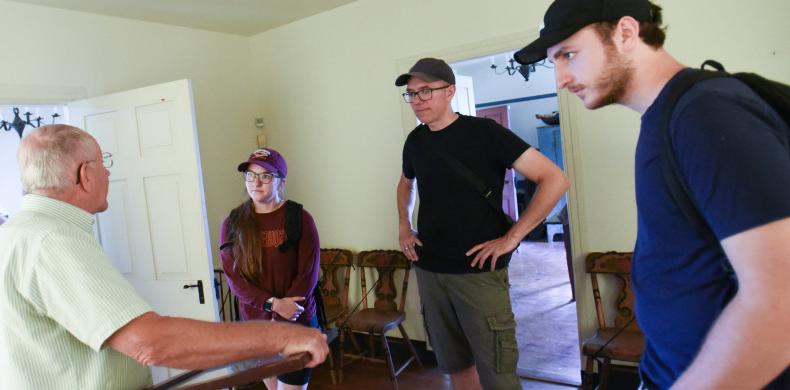July 29, 2022
Advances in technology open a variety of doors to innovation — some good, some bad. So it was with the advent of cars, said Ed Slavishak, professor of history.
Slavishak has spent several years exploring the larger story hidden beneath the seedy underbelly of motor vehicles and how they contributed to criminality.
“Cars and Prohibition created new crimes and new tools in criminals’ toolboxes,” Slavishak said. “The combination led to the development of this new kind of expertise, which was how to avoid the police while smuggling alcohol.”
Two of Slavishak’s students, Daniel Malsch ’24 and Chelsea Gemberling ’24, both history majors, have spent their summers poring over archives of police and county court records in parts of Pennsylvania and Virginia to see how cars were used in the illegal transport of alcohol.
“The most surprising part of this research process for me is how you are searching for one thing and sometimes what you find along the way is far more interesting,” Malsch said.
Gemberling said she’s gone down a few rabbit holes in her research, and is taking note of some of the most interesting items she’s found to potentially inform a senior research project.
“I have learned that the research process is super messy, until it’s not!” Gemberling said. “The very beginning of research has so much information, some you need, some you don’t. So, sifting through all the information starts to get messy, until it all falls into place.”
Slavishak is particularly interested in the drivers behind the bootlegging operations. Often jitney drivers, as Slavishak explained, they would begin by “purchasing” a car with a down payment, one they never intended to make good on. They would then use their detailed knowledge of the back roads that branched off newly laid highways to smuggle and hide alcohol. When the drivers were caught, police would often try to capitalize off the value of the car to recoup investigatory expenses, while the banks that never got their money back on the original car loan contested ownership.
“We’re able to get glimpses of this underworld in the court records we’re examining,” Slavishak said. “It’s like a whale that surfaces — you get a glimpse of it and then it disappears again.”
All the research will contribute to Slavishak’s forthcoming book, Turned Turtle, which examines the unintended consequences of cars between 1910 and 1940.
Research Contributes to Course Development
Malsch also began preliminary research into the development of an upcoming new course on public history, which encompasses the use of historical skills and methods outside of the traditional academic realm of history, i.e. museums, historical sites, films, theater, etc.
“My portion of the planning revolved around collecting syllabi and assignments from other universities to see the trends in how a course like this is taught,” Malsch explained. “I’m continuing this work by using ancestry.com to find the names of people who lived around New Berlin and Selinsgrove during the 1830s, as this will be an area of focus in the class.”
A main component of the public history course will be to have students consider their audience when delivering a history lesson. For a primer, Slavishak took Malsch and Gemberling to someone he considers a master of the art form — retired teacher Richard Nornhold ’73, who toured them through several historic sites in the central Susquehanna Valley.
“I’ve always found that the key to engaging any audience is to find a connection with what you are demonstrating or discussing. If they see how it is relates to them, they become much more interested and more likely to remember. Likewise, if you can make your audience understand how a local event was related to a national event, it suddenly becomes much more important,” Nornhold explained. “It could be listening to your grandparents describe life during the Depression or an uncle telling of his experiences during the Vietnam War. Public history is the best was to make those connections and thus to preserve history.”
